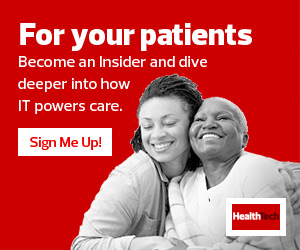Evolving Patient Preferences Call for Modernized Systems
The pandemic has forced both patients and providers to embrace new forms of communication through the internet, video and chat. This has given both parties a taste of how digital collaboration can make interactions more convenient.
For instance, before the pandemic, many patients were hesitant to use a telehealth solution when they could just as easily visit their local clinic to meet with a provider in person. However, now that walking into a clinic comes with the inherent risk of exposure to COVID-19, many patients are more willing to try out virtual visits in lieu of an in-person appointment. Of course, the reason for the visit largely determines the patient’s preference for how he or she receives care, given that some health matters still require in-person visits.
Despite more widespread adoption of telehealth solutions, most healthcare facilities and providers still lack the technology needed to drive interoperability and accessibility on a large scale. According to a new survey from Experian Health, 78 percent of patients said they would like to schedule appointments digitally, but more than half of providers surveyed felt that scheduling is too difficult to offer as a self-service. Most healthcare providers are still using traditional phone systems or in-person interactions for some or all of their patient access needs.
READ MORE: Here's why telemedicine will still be important after pandemic growth.
Given the major disruption to in-person care caused by the pandemic, however, modernizing patient access communications has become an urgent priority for healthcare organizations. Now that patients want to securely interact with providers in a more productive and convenient way, providers need to create efficiencies that result in better care and increased revenue.
Healthcare Systems Adapt to Accommodate Digital Communications
While patients have sought ways to continue care virtually, healthcare systems have been grappling with how to support the practice with reduced or virtual staff. Although many caregiving professionals remained in the office, contact center agents and administrative staff were sent home to work remotely. This proved to be difficult for organizations that lacked the right communication technology to make the transition efficient and successful.
Many healthcare contact centers quickly discovered that their on-premises legacy technology was not nimble enough to support such a disruption to everyday workflows. As a result, organizations have become acutely aware of the value in modernizing their patient access communications. Before the pandemic, some organizations expressed interest in updating their systems to evolve with changing patient expectations, but now many view the need to modernize as an immediate requirement merely to keep their virtual doors open during the shutdown.
READ MORE: This is how the chief experience officer role is evolving.
The small percentage of healthcare systems that were already using a cloud-based, omnichannel solution for their contact center communications found that the transition to a remote agent workforce could be done with speed and ease. Often, it even improved the patient access experience. As clinics kept their physical doors closed for the first few weeks of the pandemic, or operated with limited business hours, some patients experienced improved access to care in certain situations as a result of the quick shift to digital.
Many patients found that receiving basic or routine healthcare was far less complicated and time-consuming once digital communication technologies were in place, in part due to the unusual circumstances that pushed practices to loosen some of their requirements. For example, some organizations waived the need for patients to have in-person visits to get prescription refills. Instead of having to schedule and travel to an appointment, patients could now quickly chat with their provider on a secure portal to have the prescription renewed. For providers, this move to virtual care increased efficiency, allowing them to care for more patients while eliminating the risk of COVID-19 exposure that exists with in-person visits.
Of course, modernized patient access and virtual care is not possible without the deployment of advanced contact center technology. Having a nimble, cloud-based platform is critical to healthcare organizations as they look to modernize patient access now and into the future.
READ MORE: Dr. Patrick McGill tells HealthTech what’s next after the pandemic.
Omnichannel Communications Are Essential for Healthcare
While the pandemic has pushed the healthcare industry to modernize patient access at a much faster pace, the need for better communication will remain long after the nation recovers. Healthcare organizations must replace legacy phone technology with a multichannel, interdepartmental communication system to better support their patient base and drive bottom-line revenue.
Omnichannel solutions optimize work processes that enable organizations to enhance patient care by allowing for the seamless movement of critical communications from one channel to the next — an essential function in modernizing patient access. Now that patients are increasing their use of digital communications, the need to connect those channels (including chat, text messaging and video) will become key to the patient experience.
Today, patients have a wealth of choices when it comes to getting the care they need. If healthcare organizations do not meet patients where they are, they will lose patients and be left behind. All points of patient access, including appointment scheduling, telemedicine, bill payment and claim management, must be simple, flexible, compliant and completely secure.











